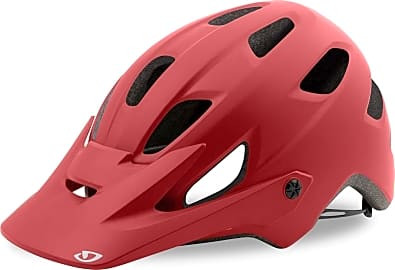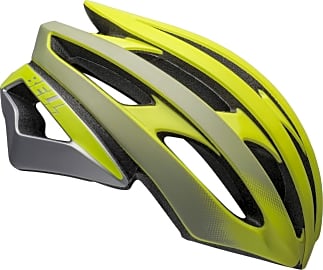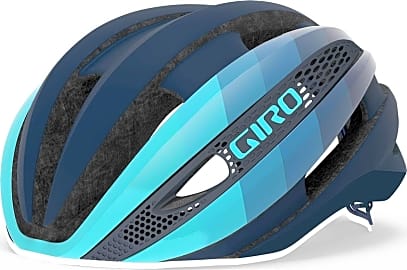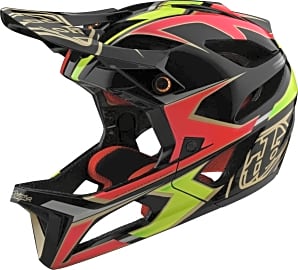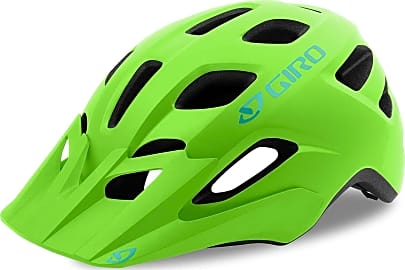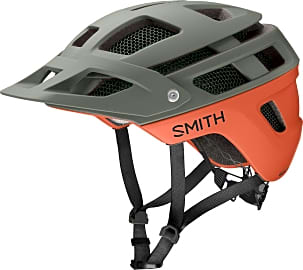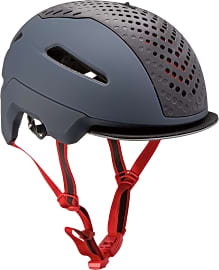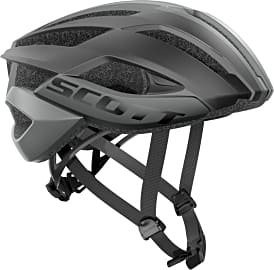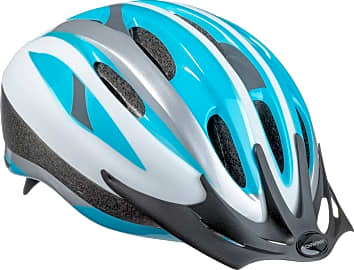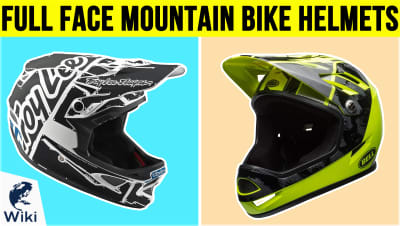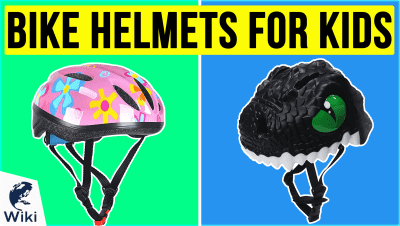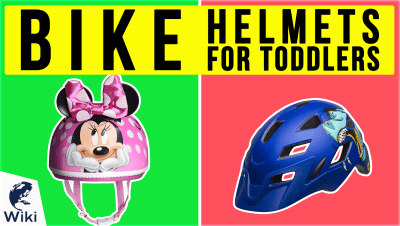The 10 Best Bike Helmets

This wiki has been updated 37 times since it was first published in July of 2015. Protect the most important part of your body -- your head -- and stay safe when out cycling on the streets or over difficult terrain with one of these stylish and affordable bike helmets. We've included both road and mountain biking models, nearly all of which are MIPS equipped. Remember, whichever one you choose, it can't do its job unless you remember to always wear it when riding. When users buy our independently chosen editorial recommendations, we may earn commissions to help fund the Wiki.
Editor's Notes
July 23, 2020:
To identify the best bike helmets, safety obviously needs to be a priority. However, we realize that how protective a helmet is means nothing if you don't want to wear it. With that in mind, we though it important to also take comfort and style into account.
MIPS, which stands for Multi-directional Impact Protection System, is one of the most innovative technologies to be incorporated in bicycle helmets in a long time, and nearly all experts agree they greatly enhance the safety of the wearer. Thankfully, MIPS-equipped helmets are no longer priced out of most casual cyclist's budget and can be had for a relatively reasonable price. Of course, even the most affordable MIPS-equipped model may be too costly for some, so we have included the Schwinn Intercept for those users. Though it may not feature MIPS, it actually received a four-star safety rating in the respected Virginia Tech study. It replaces the Schwinn Thrasher that we previously recommended, since this model only received a three-star rating and both are similarly priced.
Another new addition to our list is the Lazer G1, which received the highest safety rating for road cycling helmets. Not only does it offer a very high level of protection, but its minimalist design offers an impressive amount of air flow, making it ideal for those who live in hot climates.
We noticed that full-face mountain biking helmets were absent from last year's recommendations, and we felt that was a big oversight on our part. To remedy that, we have added the Troy Lee Designs Stage. In addition to coming in several eye-catching design, it features breakaway plastic hardware on the chin guard, an adjustable visor, and a convenient magnetic buckle. If you don't need the extra protection a full-face model offers and are on a tight budget, you may want to look to the Giro Fixture instead. It is one of the most affordable MIPS-equipped helmets and offers a lot of adjustability when it comes to fit.
Since we think it is important to keep our product recommendations up to date, we removed the Smith Optics Route and Giro Savant because they were discontinued by the manufacturers.
June 23, 2019:
When choosing a bicycle helmet, there are a variety of things one should consider, but safety should always be the top priority. Because of this, nearly every helmet on our list features MIPS technology, which is one of the most groundbreaking advancements in cycling helmet technology in recent years. Leaving the technical jargon aside, it essentially reduces the rotational forces that are encountered in certain types of crashes, which would otherwise be transmitted to the brain. The only model on our list that doesn't feature MIPS is the Schwinn Thrasher SW124. We included this because MIPS helmets are generally expensive, and if you can't afford one, it is still better to wear a non-MIPS helmet than none at all. Also, the budget-friendly Schwinn Thrasher SW124 actually made the list of world's safest helmets according to a Virginia Tech study.
It is important to buy a helmet that is designed for your style of riding, too. If you are a mountain biker, you'll want to take a look at the Giro Chronicle and Troy Lee Designs A1. Of these two, the Giro Chronicle is slightly better for warm climates. It also comes in more color options.
All of the rest of the models on our list are intended for road cycling. The Giro Synthe and Bell Stratus offer the best ventilation, while the Bell Draft is one of the most affordable MIPS-equipped models from a reputable brand. That being said, users can get the Smith Optics Route for a rather affordable price if they aren't picky about the color. When it comes to urban commuting, the Bell Annex is top dog. It also deserves special mention for being ICEdot-enabled, which means it can record and transmit GPS coordinates of a crash when connected to a smart device. It also features a sticker that first responders can use to obtain important information about the rider, such as preexisting medical conditions, emergency contact information, and more.
Special Honors
Garneau Raid This helmet offers an impressive level of customizability to achieve the perfect fit and comfort with your accessories. You can adjust both the height and the tension, and the visor can be placed into three positions. Plus, it features moisture evacuation channels to guide the sweat away from your head on those warm days. garneau.com
Rudy Racemaster Featuring the company's proprietary Hexocrush liner, this safety-focused model is specially designed to direct impact forces away from the head. It features a removable cloth liner, and comes with an extra one so that you can still ride while your soiled one is the wash. Conveniently, it also features a dedicated eyewear storage spot on the back of the helmet. rudyprojectna.com
Bontrager Blaze WaveCel Ranked as one of the safest helmets, this premium model should definitely keep your noggin well-protected in the event of a crash. Thought it is extremely pricey, it has many features that make it worth the cost, such as a magnetic buckle that allows for one-handed operation, a comfortable and secure fit for most, and a magnetic mount system to accommodate action cams. Plus, it comes with a crash-replacement guarantee. trekbikes.com
Proper Skull Insurance
The liner is considered the most important part of the helmet, as it represents the internal layer where the energy from the impact of a potential crash is managed.
Just as a construction crew avoids working around dangerous machinery without the use of hard hats, a bicyclist should likewise never go for a ride in traffic or among the elements without wearing a bicycle helmet to protect their head from life-threatening injuries and impacts. While the bicycle helmet is designed to absorb impacts, it also minimizes interference with a rider's peripheral vision. At the same time, the helmet is not designed to be a heavy object. As a person's body temperature rises during strenuous physical activity, the helmet must allow one's head to regulate its temperature without overheating or burdening the rider with excess weight.
A typical bike helmet has three major components, including the liner, shell, and strap (with buckle). The liner is considered the most important part of the helmet, as it represents the internal layer where the energy from the impact of a potential crash is managed. For that reason, liner material is both lightweight and strong. Most helmet liners are molded in expanded polystyrene foam. This type of foam offers several advantages that include its strength and ability to be molded with multiple layers in varying densities.
With different liner densities, soft layers can absorb moderate impacts, while the hard layers can bear the brunt of more intense impacts with vehicles or sharp objects. This allows manufacturers to fine tune a helmet's impact management system. Other types of foams can also be used, which include expanded polypropylene and expanded polyurethane, each with different manufacturing techniques.
The best helmet shells are full-cover, vented hard shells constructed from materials like fiberglass, lexan, or ABS plastic. The most expensive shells are often integrated into a helmet's molding for the liner, while less expensive models may include shells taped or glued around their edges.
Most helmet straps are made from either nylon or polypropylene and are fashioned after the helmet comes out of its molding with an anchor that sits atop the helmet's shell. Some straps can also be riveted and attached to the shell directly. The buckle is typically the last accessory to be added after the straps. Helmet buckles are made from plastic or nylon with side-pinch release mechanisms that make it easy for the rider to fasten quickly. Some helmets use a motorcycle-style D-ring buckle requiring riders to thread the straps through two D-shaped metal rings in order to fasten the helmet around their heads.
Choosing The Best Helmet
When it comes to protecting your skull and brain, it's worth spending a bit extra to ensure you have the best quality helmet that meets the most current safety standards with the most durable materials possible. The chosen helmet should be lightweight, offer the proper fit, be well ventilated, and feature easy adjustments of its straps and buckle without interfering with one's line of sight.
Once you've got safety and convenience checked off the list, then you can start thinking about style.
The straps should also be sturdy and snug to prevent the need for adjusting them in the middle of a bike ride, which could prove both inconvenient and dangerous. Some helmets also incorporate an additional, fold-down visor that can provide extra protection from sun glare when riding in the late mornings or early afternoons. Some of the most cutting-edge bike helmets boast antibacterial padding, which comes in particularly handy if you tend to sweat a lot.
Once you've got safety and convenience checked off the list, then you can start thinking about style. The more aerodynamically-designed the helmet is, the faster you'll be able to ride, especially downhill. The helmet should be considered more of a supportive and encouraging force in this regard instead of a hindrance to your speed and agility. If the helmet also happens to look sleek, then that's an extra bonus.
Finally, consider the times of day that you'll be riding. Many helmets are designed with bright colors and can easily accommodate reflective strips for riding at night.
A Brief History Of The Bike Helmet
The earliest bike helmets were made from pith and were used as early as the 1880s as the popularity for riding clubs grew and more people recognized the problems caused by head injuries. By the beginning of the twentieth century, racing cyclists began using helmets made from strips of leather-covered padding with a ring of leather around the head surrounded by an outer ring made from wool.
Today's helmets are designed to be as light as possible with multiple vents to keep a rider's head cool.
This ring of leather was then supplemented by strips of leather arranged longitudinally over a rider's head, which offered somewhat better protection than pith helmets, but not enough to withstand heavy impacts. Hard helmet exteriors with foam liners began development over the coming decades.
By 1970 at the beginning of the bicycle popularity boom, the Snell Memorial Foundation instituted one of the first bicycle helmet standards in the United States. In 1975, American helmet manufacturer Bell Sports developed the first practical, commercially-successful, and purpose-designed bike helmet called the Bell Biker, which was constructed with a polystyrene-lined hard shell.
In 1984, the American National Standards Institute released the ANSI Z80.4, which was considered the first workable bike helmet standard for the United States. This standard had a major function to rid the helmet market of ineffective products while increasing the quality of the accepted models. By the early 1990s, a thin hard shell was added to the polystyrene foam helmet for extra durability.
By the beginning of the twenty-first century, helmets began to incorporate more advanced retention and fitting systems that included cradles designed to adjust precisely to a rider's head. Today's helmets are designed to be as light as possible with multiple vents to keep a rider's head cool. Also, many states have made wearing helmets mandatory.


